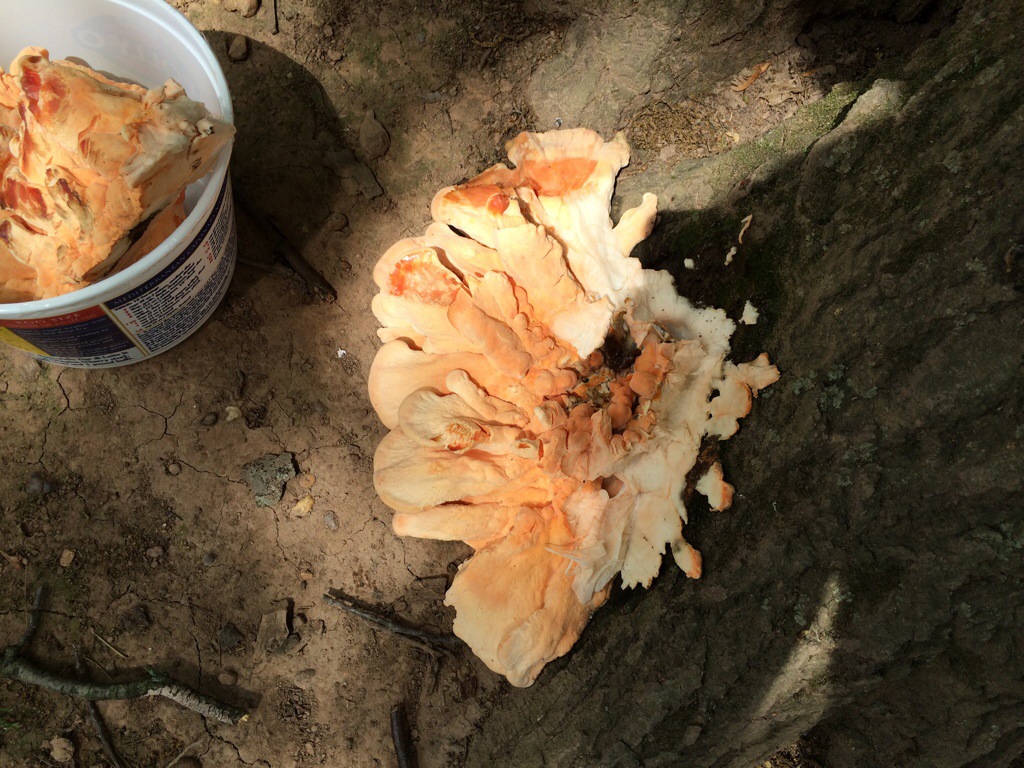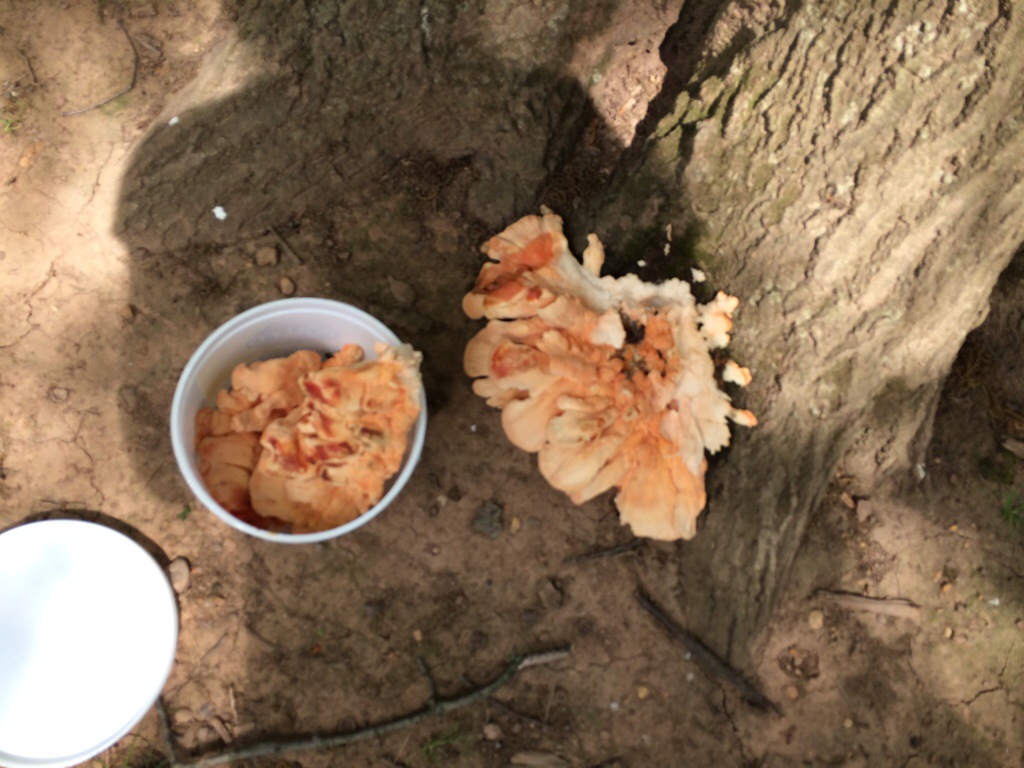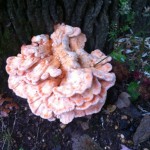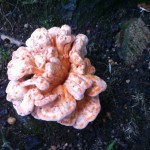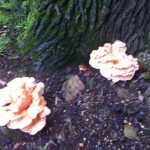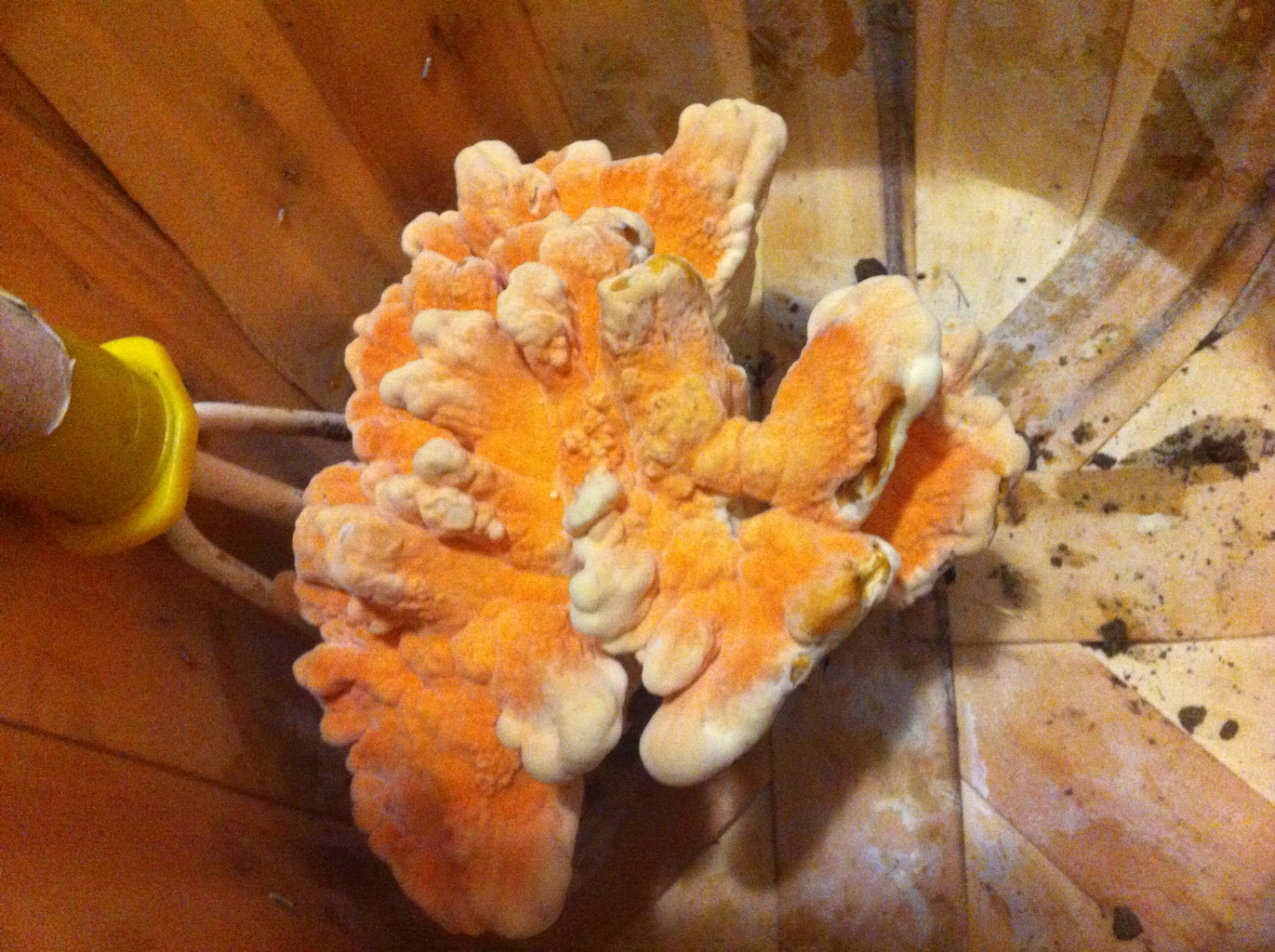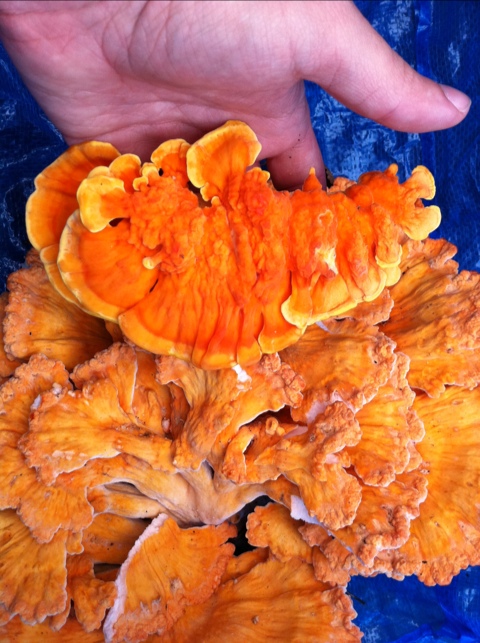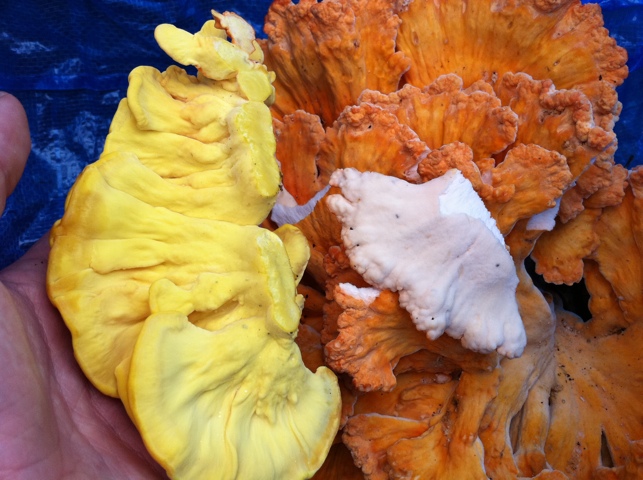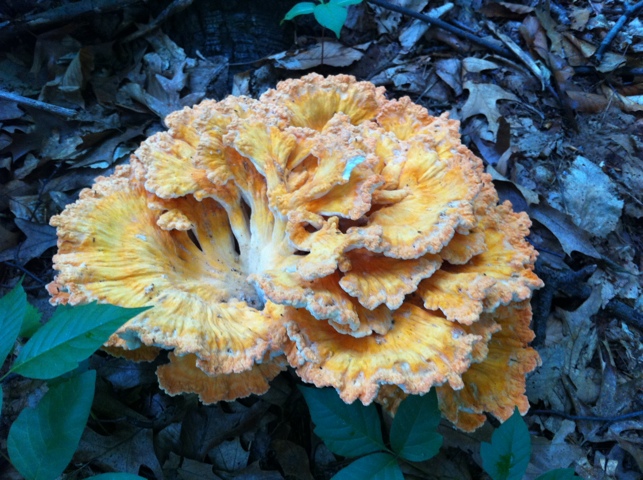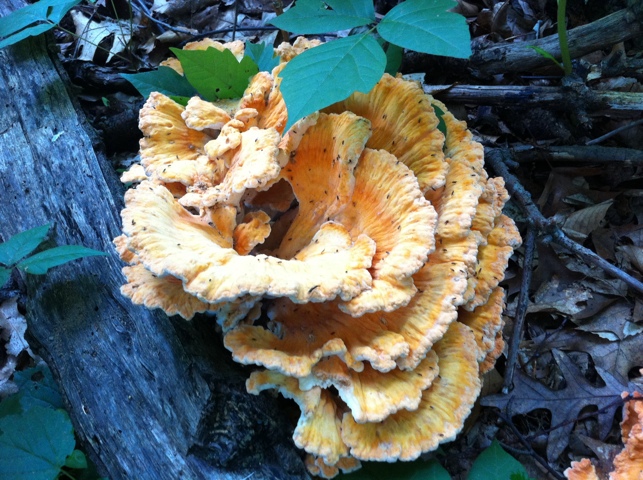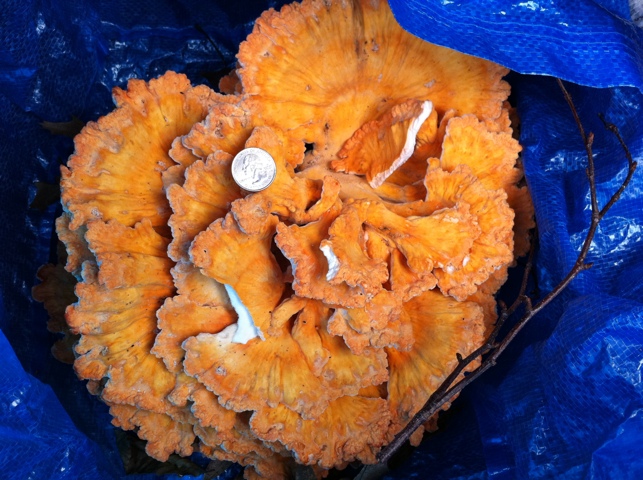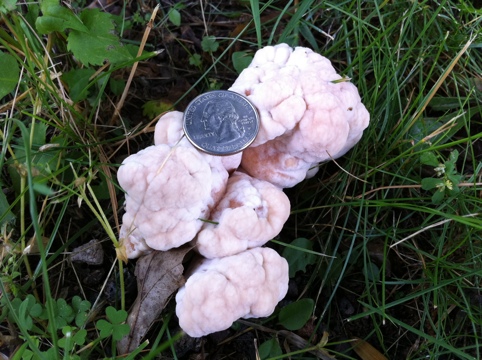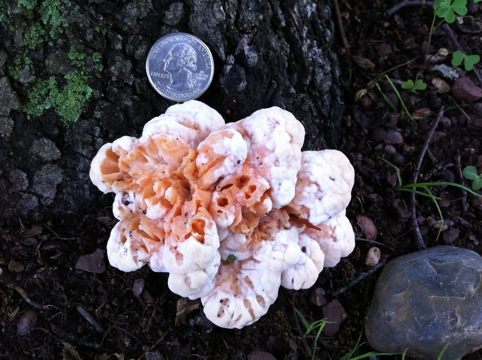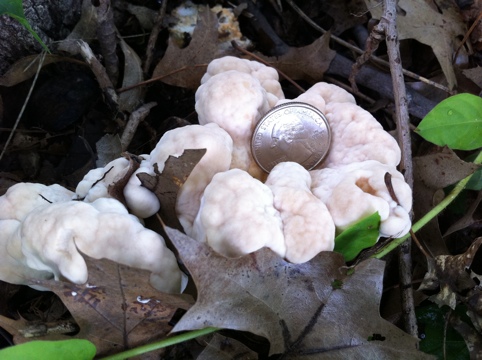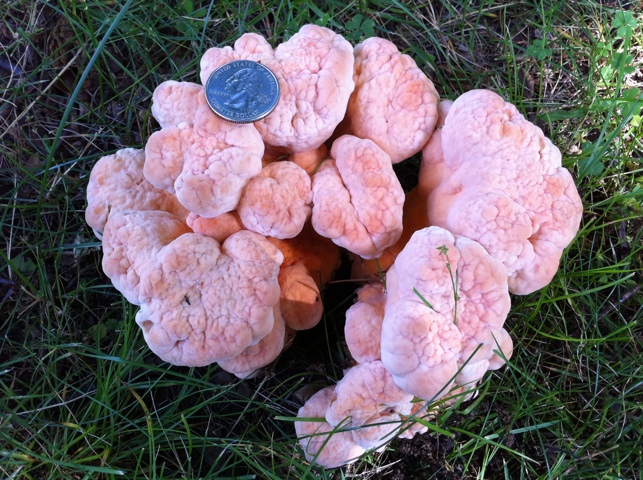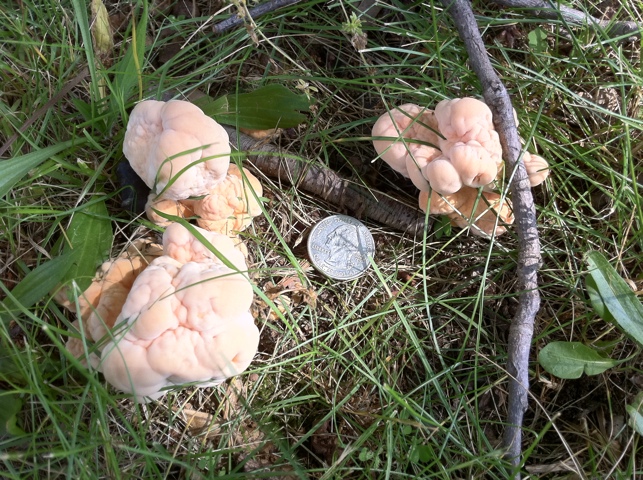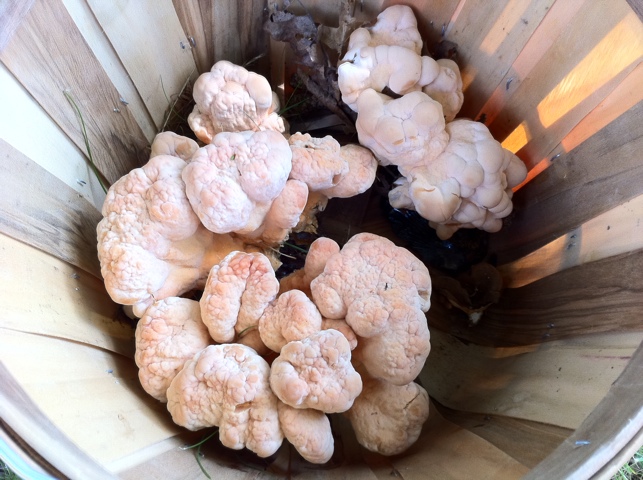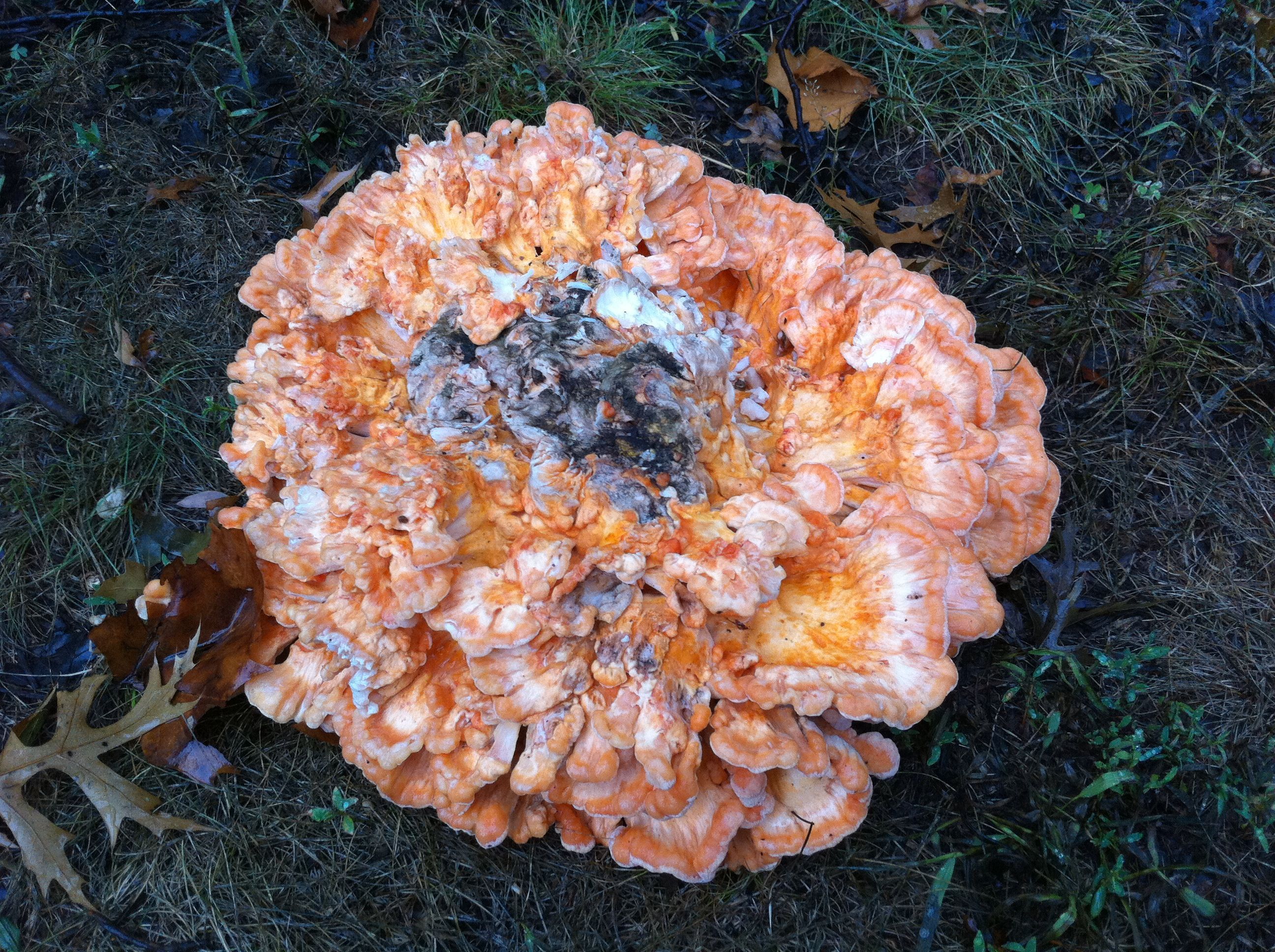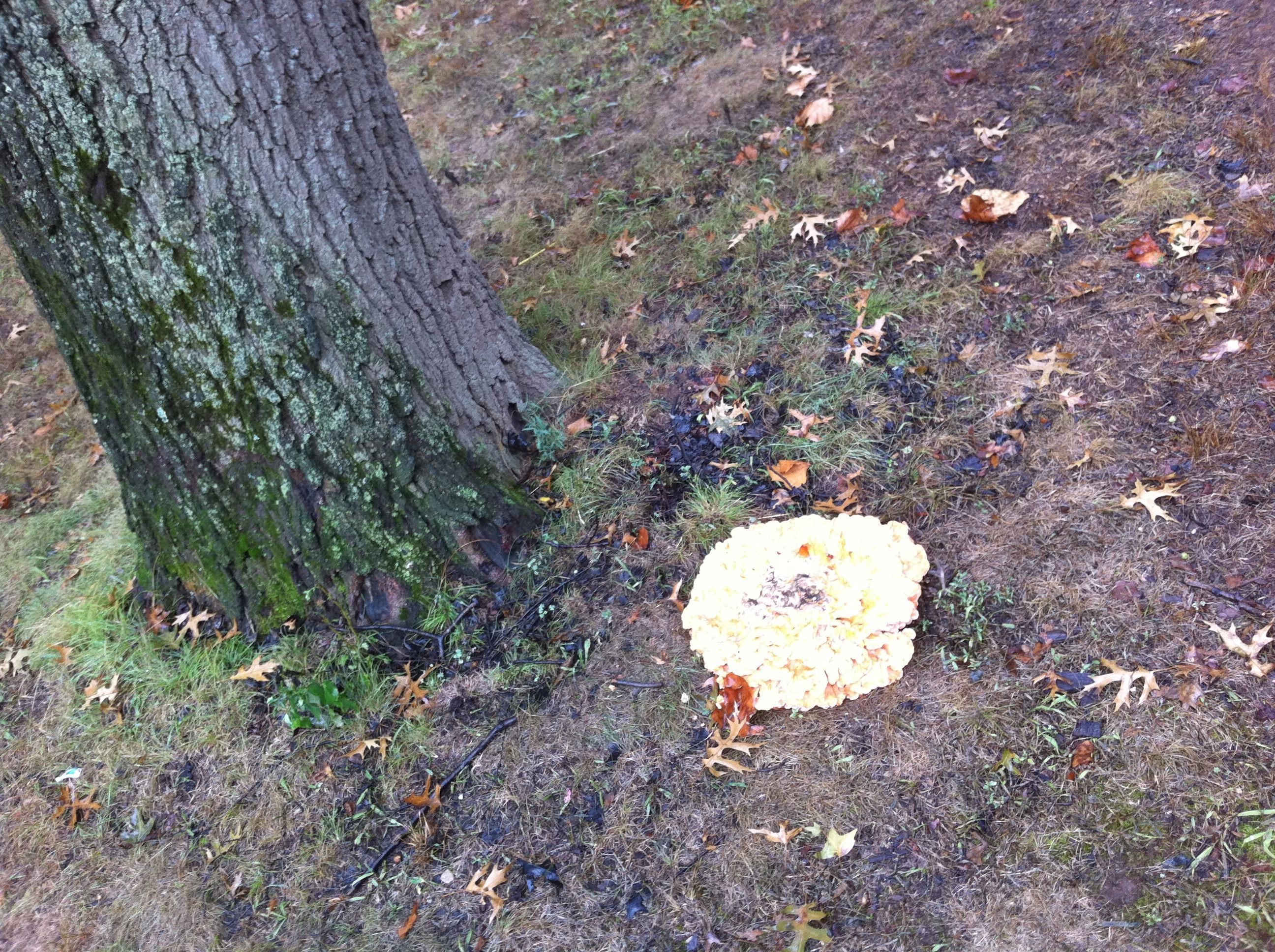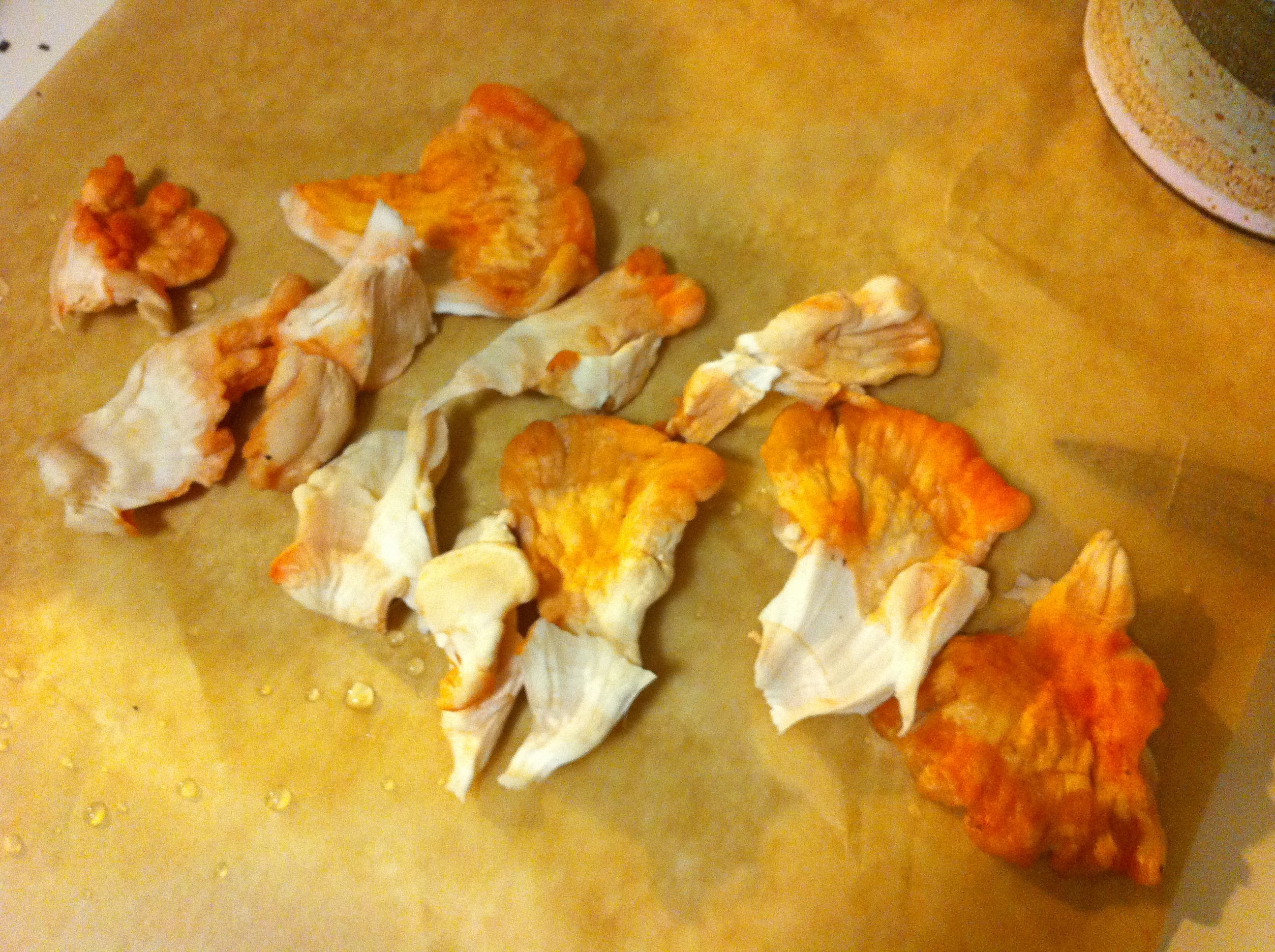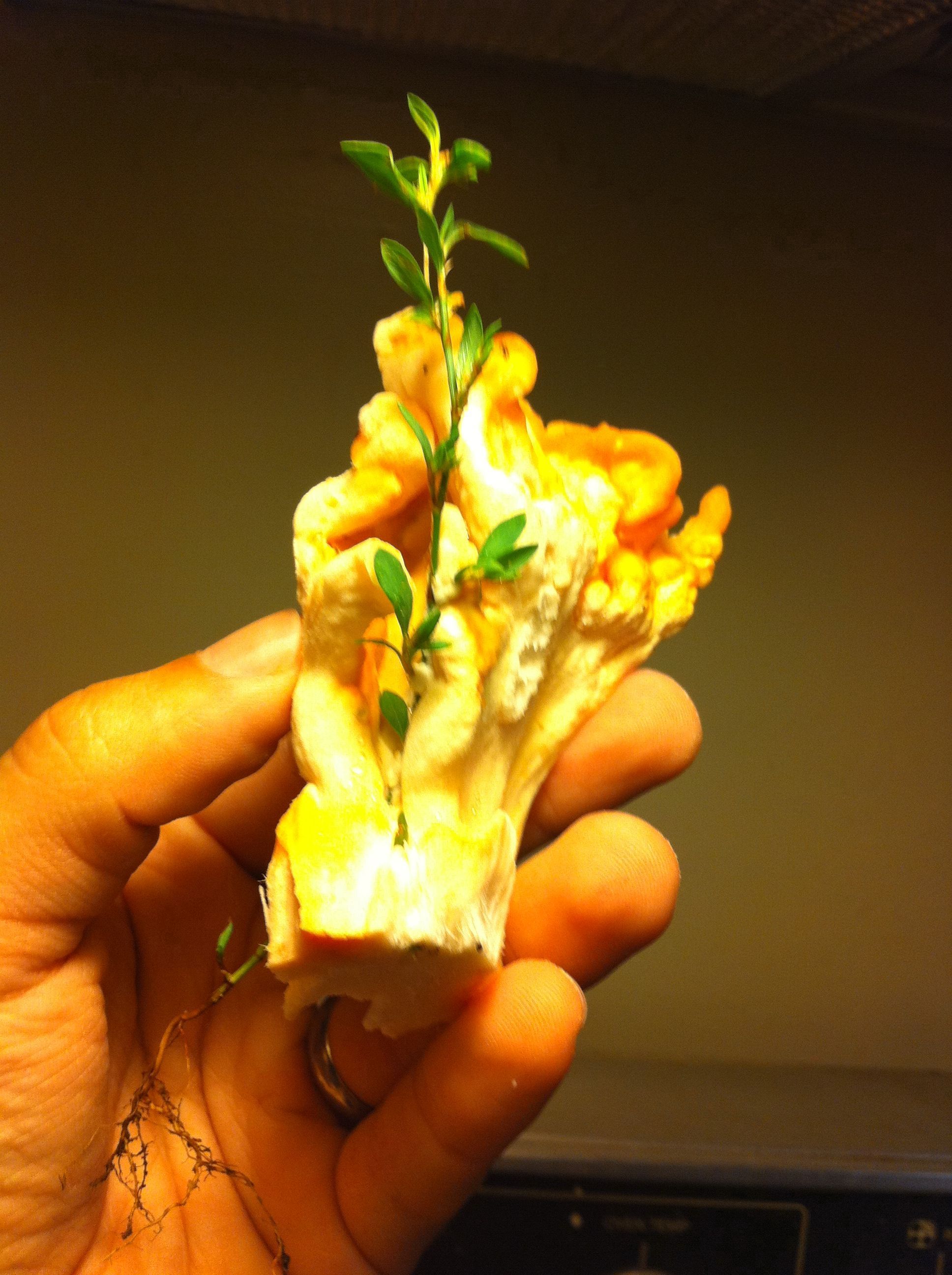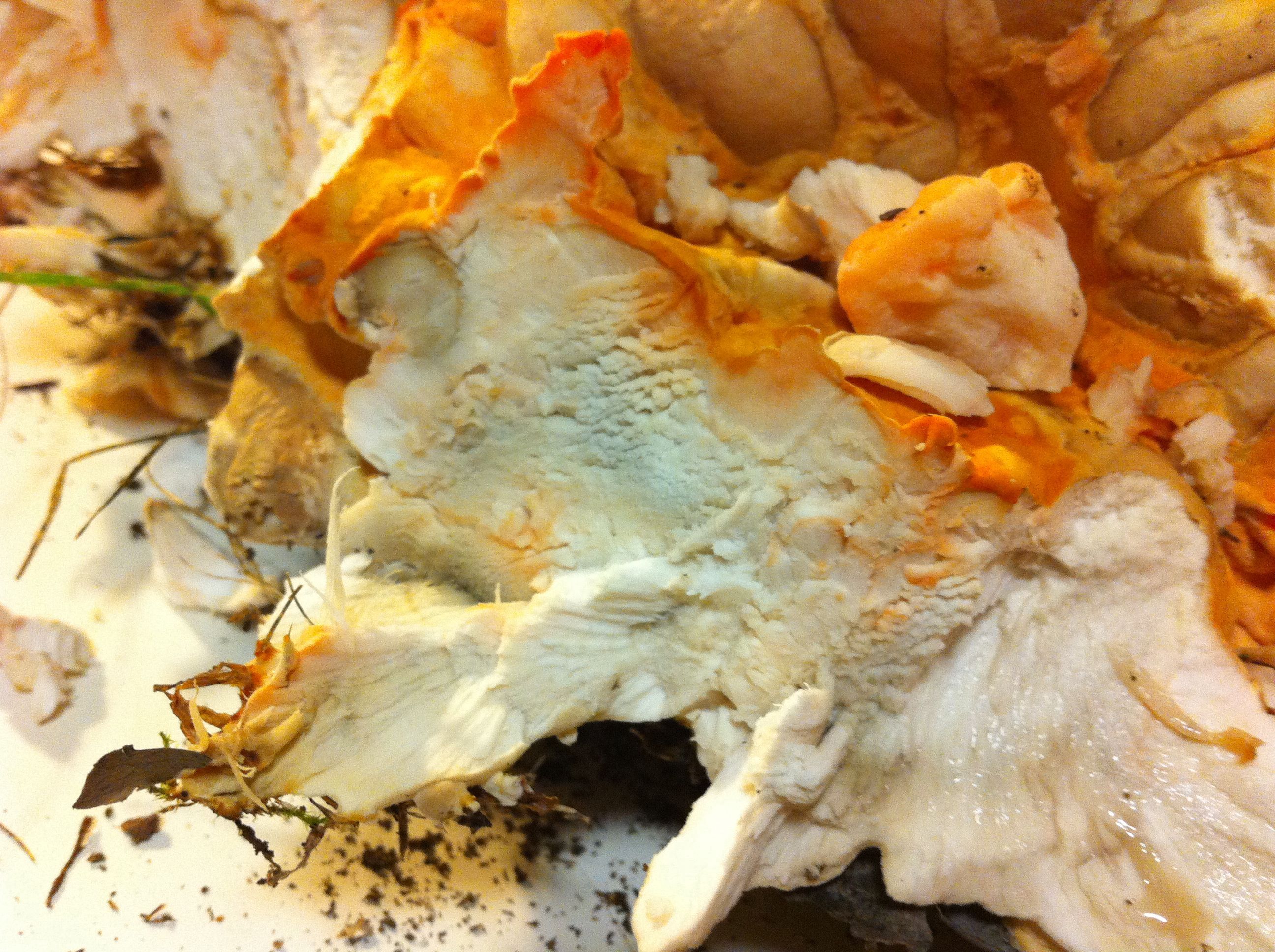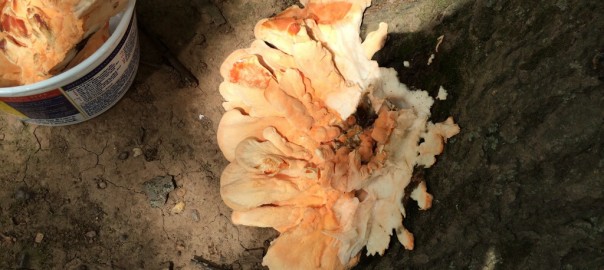
Category Archives: Laetiporus cincinnatus

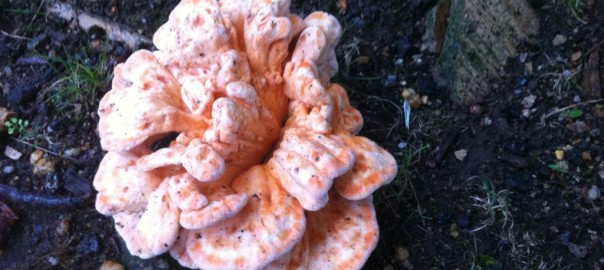
Chicken of the Woods (L. Cincinnatus)
- Florette 1
- Florette 2
- Both 1 and 2 together. The one growing up in poison ivy excluded.
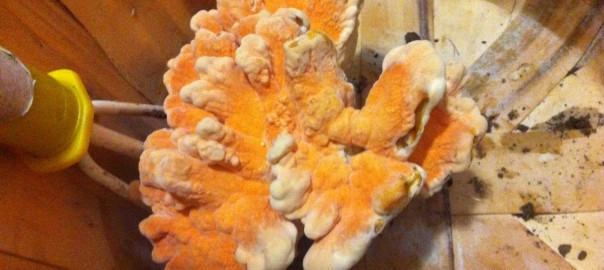
#1 Laetiporus cincinnatus
The difference between L. sulphureus and L. cincinnatus
Rarely does one get to see them side by side as fruiting conditions are just different enough that they tend to pop at different times.
Even given that the L. sulphureus is rather young, and then L. cincinnatus is fully mature, you can see the striking difference in the pore surface (lower picture). The former is bright yellow where the latter is white-cream.
Furthermore, where L. sulphureus generally grows on logs in the summer and fall, L. cincinnatus generally grows at the base of a tree or up from underground roots in rosettes in the early summer and late fall (so it seems to like things a bit cooler).
#1 Cincinnatus Chickens
#1 More Chickens (L. cincinnatus)
From the same cluster as yesterday. Heavy rains prompted further growth. The two good clusters I’m going to put up for sale on the Fungorium so act fast before I get to them, hehe.
#1 Chicken of the Woods! (L. cincinnatus)
Which Mushrooms Freeze Best?
So today I took an inventory of our freezer to see which types of mushrooms survived deep freeze better than others. I was quite disappointed to see that the only species that really “made it” throughout the winter was Chicken of the Woods (Laetiporus sp.). In fact, 90% showed no signs of degradation at all, however I did note a trend that the fresher it was frozen the better it held up. This is very promising as Chickens don’t dehydrate well *at all* (they become papery and gritty when they’re rehydrated, no matter for how long). Chicken “ends,” i.e. the bits that are corky to begin with and are destined for making into broth, work well when they’re dehydrated and then boiled in water to make soup, however they need to be scooped out after they’ve imparted their flavor to the broth as they are simply inedible.
All of our Oysters (Pleurotus sp.), Honey Mushrooms (Armillaria sp., including E./A. abortivum), Meadow Mushrooms (Agaricus campestris), and Puffballs (Calvatia sp., Vacellum sp. etc) didn’t make it through the winter months without serious freezer burn or going stale, no matter how well-packed they were.
All of our Hen of the Woods (Maitake / Grifola frondosa) that was in the freezer didn’t do so well either, but the dried Hens are still great, sealed in airtight mason jars.
This upcoming year I’ll be experimenting with more dehydration.
Peace,
-Steve
Chicken of the Woods… Er… Park
Two days of steady rain after a very very dry summer has prompted one of the most delicious fungi to bloom on abundance: Chicken of the Woods.
In Johnson Park, I found a 7-10 pound specimen, fresh and colorful. As its pores were white, and it wad growing a foot from the base of its host tree, this is a specimen of Laetiporus cincinnatus, one of the most prized of the “Chicken family.”
Unlike its close cousin Laetiporus sulphureus where only the tender outer flesh is soft enough to eat, most of it’s flesh is edible, save the very hardest parts in the core.
After “butchering” it at home, I was left with 2 cookie sheets full of nice-sized pieces, one of which is now freezing, while the other is safely tucked into the fridge for cooking up after the “taste-test period” is up.
Whenever I find a new 100% positive identification, morphologically and microscopically, I *always* eat a tiny bit and wait for a few hours to overnight to make sure it won’t make me sick Even with wild mushrooms I’m accustomed to, they aren’t cultivated in a controlled environment and could be affected by any number of things.
If these are good to go, I shall be delighted.
Peace,
-Steve
Three Mile Walk
My wife and I took an awesome walk today all the way from Highland Park, through Johnson Park, across the Rt 18 bridge and into New Brunswick for a late brunch at the Au Bon Pain (quite a treat for our family, as we tend not to eat out) and then caught the bus back. During the walk through Johnson Park, however, we came across three amazing sites for two different kinds of whacky mushroom.
First Nayla noticed simply popping up from out of the ground (which we later found was actually from decaying roots) a large patch of Ganoderma lucidum more commonly known as Reishi or Ling Zhi, which are very prominent in traditional Chinese medicine.
Next we came across a huge old stump with a cluster of Laetiporus sulphureus, or Chicken of the Woods. If we had only thought to bring something to store anything we would have found in, we could have made three meals out of this cluster. But it might have been for the best, as it looked as if someone had grazed it (be they woodland creatures or small children). I’m going to have to remember to drop by there again and grab some to make some spawn to inoculate a cord of wood that my parents-in-law don’t know what to do with.
Lastly, we came across another set of Reishi… Only these had taken over an entire tree (which was very well dead). About a hundred caps came out of it like a spiral staircase, with one at the very very top (about 20 feet up) that was, and I kid you not, about the size of a soccer ball. Once again, if I had some way to store it, I would have found a way to climb the tree. 🙂
Actually looking closer at the picture I snapped of the one at the very top, it might not be a Reishi at all. The pores look a bit dangley and toothy and I could not see whether or not the top was “lacquered,” so this crowning piece might be a young Hericium erinaceus or Lion’s Mane. I may never know.
Peace,
-Steve
